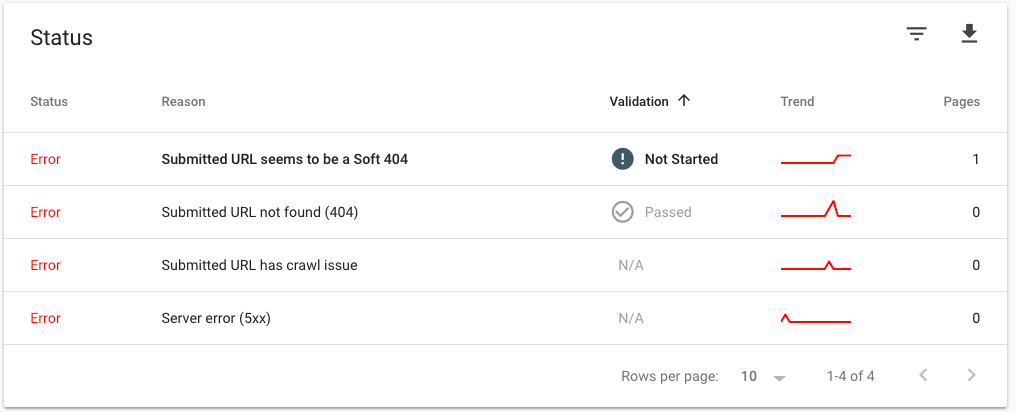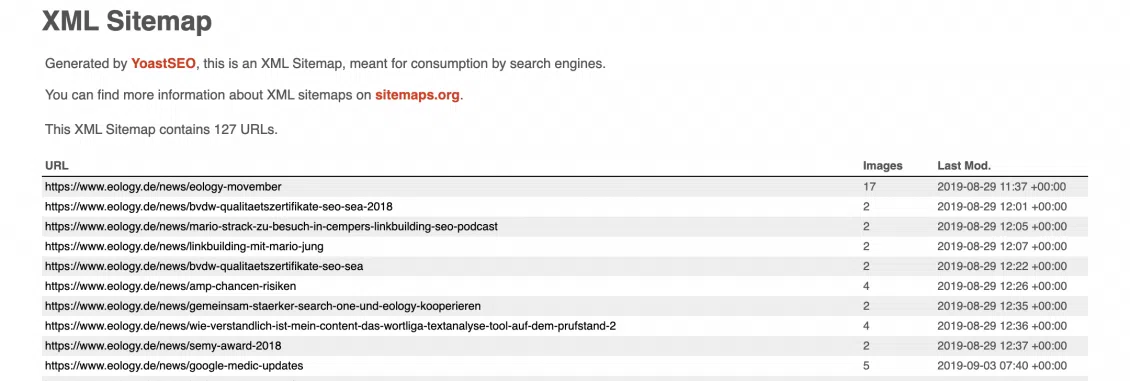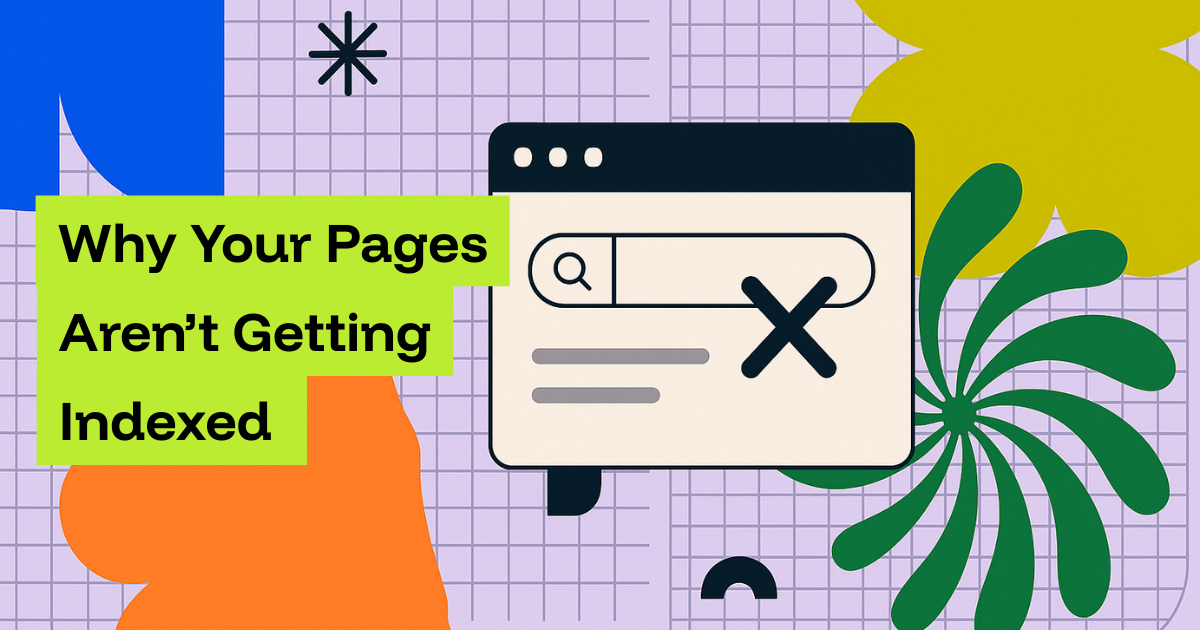You publish a new page, hit refresh a dozen times, and wait for Google to pick it up. A few days go by, maybe a week, and nothing. You try typing the URL into Google, still no sign of it. It feels like shouting into an empty room. You did the work, but Google isn’t even giving your page a chance.
If that’s ever happened to you, you know how frustrating it is. And you’re not alone. Pages slipping through the cracks of Google’s index is one of the most common (and invisible) problems website owners face. The good news? Once you understand why pages don’t get indexed, you can actually fix it and stop leaving traffic, leads, and sales on the table.
Common Causes of Indexing Problems
Think of Google like a giant library. Every time you publish a page, Google decides whether to “put it on the shelf” (index it) so people can find it in search results. If your page doesn’t make it onto that shelf, it’s basically invisible. There are a few common reasons this happens.

Crawl errors
Before Google can index a page, its “librarian” (called Googlebot) has to visit it. If the page is blocked, broken, or slow, Googlebot might walk away. For example, if you moved your About page to a new URL but forgot to fix the old link, Google could keep hitting the broken version and eventually give up.

Noindex tags
A noindex tag is like putting a sticky note on a page that says “don’t add this to the library.” Developers sometimes use it while testing a site so unfinished pages stay private. The problem comes when they forget to remove it. Imagine you open a new bakery website with recipes, but every recipe page quietly tells Google “ignore me.” Months later, none of your recipes show up in search because the tag was never removed.
Duplicate content
Google wants variety, not copies of the same page. If two or more pages are nearly identical, Google may choose just one to keep. A classic case is ecommerce stores that reuse manufacturer descriptions. Say you sell 500 kitchen gadgets, but every product page repeats the same two paragraphs from the supplier. Google thinks, “These all look the same, no need to index them all.” That means dozens of your product pages might never appear in search.

Checking Google Search Console
The first place to start when diagnosing indexing issues is Google Search Console. It’s not always perfect, but it gives you direct feedback on how Google sees your site.
The Coverage report will show which pages are indexed, which are excluded, and why. You might see messages like “Crawled – Not Indexed” or “Duplicate, Submitted URL Not Selected as Canonical.” These aren’t always easy to interpret, but they’re clues.
Take the example of a SaaS company that noticed traffic dropping on its help articles. In Search Console, dozens of pages were flagged as “Crawled – Not Indexed.” The culprit? Their internal linking was so weak that Google wasn’t treating the pages as important. By adding links from their main features page, those articles started appearing in the index again.
How Site Performance Impacts Indexing
Here’s a piece most people underestimate: your site’s performance can directly affect whether Google decides to index your pages.
If your server is slow to respond, or if your site frequently goes down, Googlebot will struggle to crawl it. And if crawling is unreliable, indexing becomes less likely. Google doesn’t want to send searchers to pages that might not load.
A real example of this is a local news site that ran on cheap hosting. During traffic spikes, the site frequently timed out. Googlebot kept hitting errors when trying to crawl, which led to whole articles being skipped. Once the site moved to a faster host, indexing stabilized, and articles started showing up within hours of publication.

Fixing Internal Linking and Sitemap Issues
Sometimes the problem isn’t the content, it’s the structure. If your page isn’t well-linked from other parts of your site, Google might not find it in the first place. Internal linking is like building pathways for crawlers. The stronger and clearer the pathways, the easier it is for Googlebot to travel through your site.
Sitemaps play a role here too. A startup blog once noticed half its new posts weren’t being indexed. The reason? Their sitemap was outdated and still pointing to draft URLs. Google never got the right signals. After cleaning up the sitemap and linking new posts from their homepage, indexing issues disappeared.
Setting Up Alerts for Index Status Changes
The hardest part about indexing issues is that they often happen silently. A page that was once indexed can drop out without warning. Or new content can sit unindexed for weeks before you even notice. By the time you catch it, you’ve already lost valuable visibility.
A digital agency experienced this with a client’s high-performing landing page. It had been driving steady leads for months, then suddenly disappeared from the index. Nobody noticed until conversions dropped. With proper alerts in place, they could have caught the issue immediately and resubmitted the page before it hurt revenue.
How Cromojo Helps
This is where a tool like Cromojo makes life easier. Instead of playing detective with Search Console, you can automate the entire process.
Cromojo detects indexing failures the moment they happen, so you don’t find out weeks later. It also keeps an eye on your site’s uptime and performance two things that directly affect crawling. If your site goes down or slows to a crawl, you’ll know before it costs you indexing opportunities.
Think back to that digital agency. If they had Cromojo set up, the landing page issue wouldn’t have gone unnoticed. They would’ve been alerted the moment it dropped out of the index, giving them the chance to fix it before traffic and leads took a hit.
Troubleshooting Checklist: Fixing Indexing Problems
Here’s a quick step-by-step checklist you can use whenever you notice pages aren’t being indexed:
- Check Google Search Console for indexing status and error reports.
- Look for crawl errors (404s, server errors, blocked resources).
- Scan your site for noindex tags. Remove them from pages that should be indexed.
- Review for duplicate content (identical product descriptions, boilerplate text).
- Test site performance. Make sure your server isn’t too slow or frequently down.
- Update and resubmit your sitemap to ensure Google sees the correct pages.
- Strengthen internal linking so crawlers can easily navigate your site.
- Set up alerts (with Cromojo) so you know immediately when a page drops out of the index.
Taking Control of Your Indexing
At the end of the day, not getting indexed isn’t just a technical glitch. It’s lost opportunity. It’s content that never reaches the audience you wrote it for. It’s sales and leads that slip away without you even knowing it.
But here’s the upside: indexing problems are fixable. By following this checklist and monitoring proactively, you can keep your content visible and your business growing.
Because in the world of search, being unseen is the biggest risk of all.


.png)
.png)

